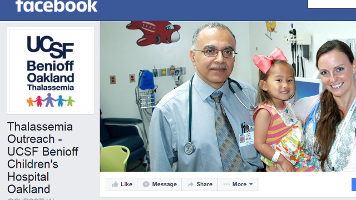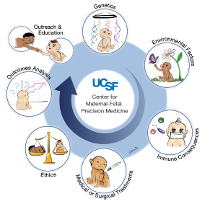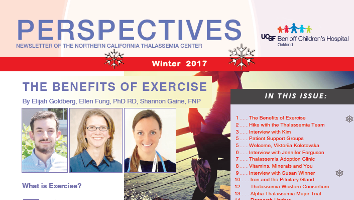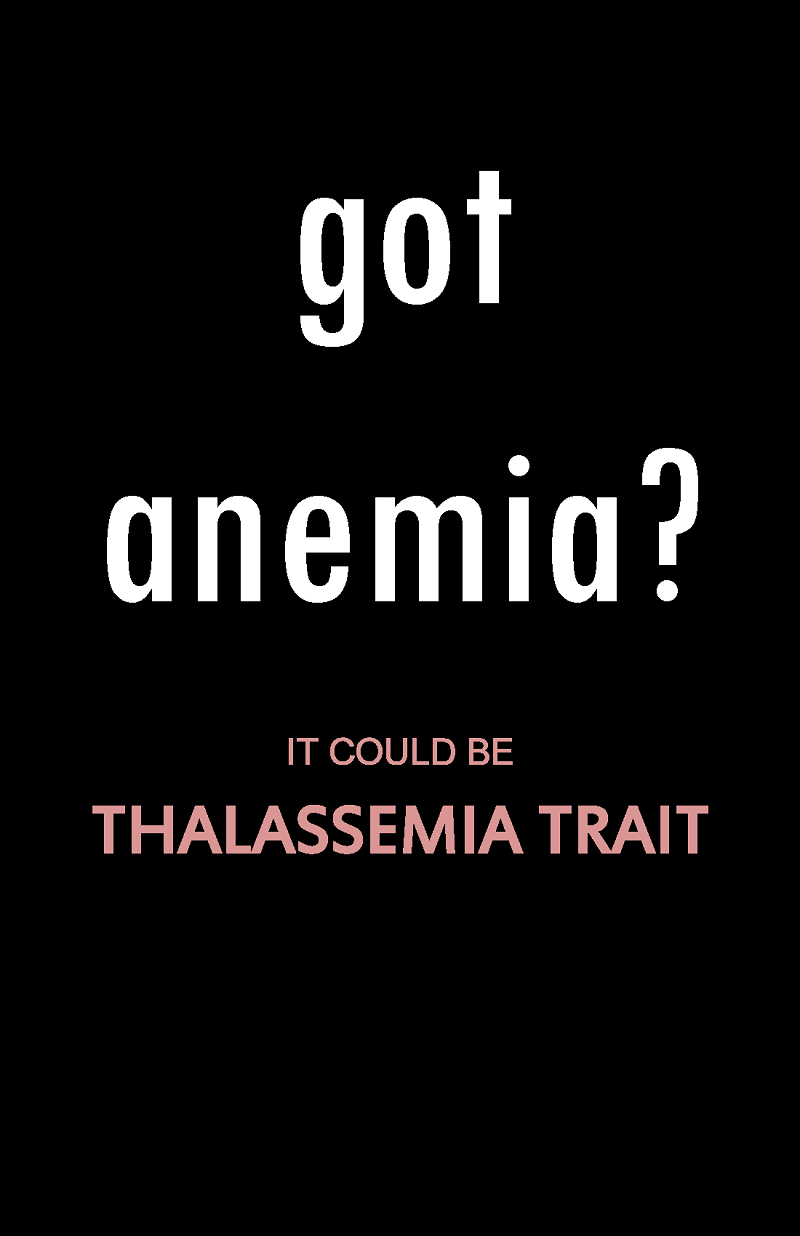Thalassemia Trait
Getting Tested for Trait
Testing for thalassemia trait involves having a single blood sample drawn. This can be done during a doctor's appointment, genetic counseling session, or sometimes through community health fairs offering this service. The following screening tests identify most types of thalassemia trait, as well as sickle cell trait, E trait, and most other known hemoglobin traits:
- Hemoglobin electrophoresis with quantitative hemoglobin A2 and hemoglobin F
- Complete blood count
- Iron studies (free erythrocyte protoporphyrin, ferritin, and/or other iron studies)
Individuals with beta thalassemia trait usually have evidence of microcytosis and increased levels of hemoglobin A2. Hemoglobin F is sometimes elevated as well. Individuals with alpha thalassemia trait usually have evidence of microcytosis and normal levels of hemoglobin A2 and F. Sometimes trait status cannot be determined by these screening tests alone. Results may be ambiguous for a variety of reasons. If iron deficiency is detected, an individual must be retested after completing iron supplement therapy. Occasionally, DNA testing that directly examines the alpha and/or beta globin genes is necessary. DNA testing is the only way to determine silent alpha thalassemia trait and the related hemoglobin trait called hemoglobin Constant Spring. DNA testing may also be necessary in order to allow for the option of prenatal testing.
It is important for individuals to be aware of their thalassemia trait status, particularly individuals of reproductive age. Depending on the hemoglobin type of a current or future partner, future children may be at risk for thalassemia disease or other related hemoglobin diseases. Prenatal and other testing options are available to couples found to be at risk for having a baby with disease.
If you have learned that you have thalassemia trait, you may have questions about how this will affect you and other family members. Your doctor may be able to answer these questions or refer you to a genetic counselor in your area. You can also locate a genetic counselor through the website of the National Society of Genetic Counselors, www.nsgc.org.
Informing other family members of the possibility that they may also have thalassemia trait can be difficult and time consuming. We've created some letters that can be easily printed out and distributed to family members. These letters describe inheritance, testing, and the significance of thalassemia trait and disease. There is also a fact sheet available for download with information about hemoglobin E trait, which is related to the thalassemia traits.
- Alpha thalassemia letter to family members
- Beta thalassemia letter to family members
- Hemoglobin E trait fact sheet
Why Get Tested?
- Family Planning
- If you are planning to have children and both you and your partner carry the trait for thalassemia, your future children could be born with thalassemia disease, which is a serious medical condition. Prenatal and other testing options are available to couples found to be at risk for having a baby with the disease.
- If you carry the trait for thalassemia, but your partner does not, your child could inherit the trait from you. It is important that this goes into their medical records for your children and grandchildren’s future family planning.
- Healthy Pregnancy
- Women who carry the trait may be more likely to develop anemia during their pregnancy. It is important to discuss this condition with your medical provider.
- Your Health Matters
- When a trait carrier has a blood test, their red blood cells may appear smaller than what is normal. Knowing that you carry the trait for thalassemia can prevent you from having unnecessary diagnostic tests.
- Doctors often mistake being a carrier for thalassemia as having iron deficient anemia, due to the small size of red blood cells. Therefore, they often prescribe iron supplements. Iron supplements may result in excess iron, which can collect in many areas of the body causing organ damage. Carriers should only take iron supplements if a blood test (serum iron) shows they are iron deficient.
- Getting Tested is Simple
All you need is a blood test which checks the following:- Hemoglobin electrophoresis with quantitative hemoglobin A2 and hemoglobin F
- CBC – Complete Blood Count
- Iron Studies (free erythrocyte proto porphyrin, ferritin, and/or other iron studies
- Be Informed.
For more information contact your doctor or if you would like to find a Genetic Counselor through the National Society of Genetic Counselors at www.nsgc.org.
Thalassemia Trait: What you should know:
If you have thalassemia trait, YOU DO NOT HAVE THE DISEASE. However, there is a possibility that your children could have thalassemia disease.
People who carry thalassemia trait need to know that...
- Thalassemia trait is NOT THE DISEASE. It is not an illness and will never turn into an illness.
- A trait carrier of thalassemia will always be a trait carrier. It is a genetic trait passed down from parents to children. Being a trait carrier is not contagious.
- Over two million people in the United States carry the genetic trait for thalassemia.
- There are two types of thalassemia trait: Alpha thalassemia trait and Beta thalassemia trait.
- A carrier of thalassemia trait is a healthy person. Being a carrier of thalassemia does not cause known health problems which require medical treatment. Thalassemia trait will not impair your work, diet or exercise.
- Thalassemia carriers have smaller red blood cells that may cause a mild anemia. The anemia is so mild that it does not require medical treatment.
- Trait carriers should not take iron supplements unless a special blood test (serum iron or serum ferritin) shows that you are iron deficient.
- Carriers can give blood providing they are not anemic (do not have a lower hemoglobin than usual).
- If you and your partner both have thalassemia trait, for each pregnancy, there is a:
- 25% chance that the child will have thalassemia disease
- 25% chance that the child will have normal hemoglobin
- 50% chance that the child will have thalassemia trait
If you have not been tested or unsure of your trait status IT IS BEST TO GET TESTED! Trait testing is easy and virtually painless, and may be ordered by your health care provider. For more information about thalassemia trait and disease, or to find out more about the Thalassemia Outreach Program, please call 510-428-3885, ext.













